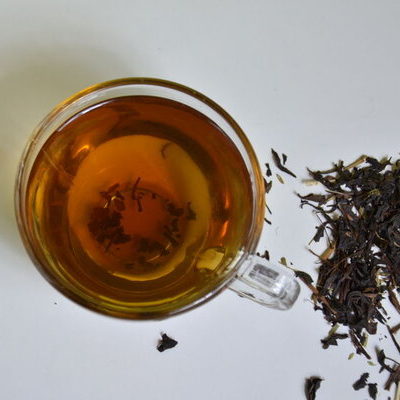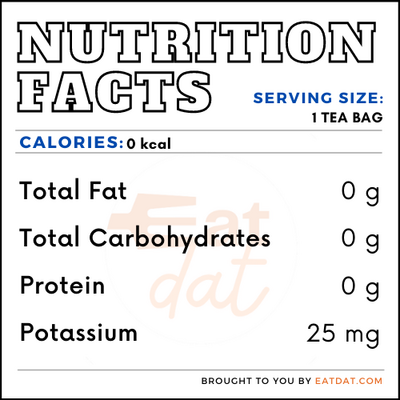
Earl Grey Tea
also known as Bergamot Tea
What is Earl Grey Tea?
Earl Grey is a type of black tea that is flavored with the essential oil of bergamot. The bergamot orange originates from the Italian province of Reggio di Calabria. However, this tea is considered quintessentially British.
- The bergamot that is used today is a blend between the Seville orange and the sweet lime Southeast Asia.
- Not to mention, there are many varieties of this tea that have adapted the traditional recipe for modern tea drinkers.
Some common variations of this tea tea include:
- Lady Grey
- Russian Earl Grey
- Decaf
- Red Earl Grey
- Earl Green
- Mademoiselle Grey
Origin
Tea dates back to 200 BC when a Chinese emperor brewed the first-ever cup of tea by accident. Further exploration of teas and tea making in China would lead to the invention of scented and flavored tea, using jasmine flowers, sweet oranges, and lychee fruits. Legend has it that it was a Chinese tea master who blended the first Earl Grey for the English aristocrat Charles Grey. Another story insists that the tea came about by happenstance when a shipment of tea and bergamot, which had been shipped together, created a pleasant infusion. What’s certain is that this tea has become a classic tea blend that is still enjoyed in the United Kingdom and around the world.
Nutrition
One tea bag of earl grey tea contains:

Earl Grey contains polyphenols that have antioxidant properties and can combat free radicals and cell damage. Some other possible health benefits of this tea include increased heart health and improved digestion. Products with bergamot have been linked to decreased cholesterol, while black tea has been shown to reduce blood pressure. Furthermore, studies have shown that this tea can help treat inflammatory bowel disease and reduce diarrhea episodes. However, overconsumption of this tea may lead to blurred vision and muscle cramps, as this tea can block potassium absorption.
Commercial Production
The commercial production begins with first harvesting black tea leaves that then must undergo processing. The processing of tea leaves includes withering, rolling, oxidizing, and drying, which is then followed by incorporating bergamot flavoring. If this tea is made with green tea leaves, the oxidizing step is skipped. Tea leaves can be sprayed or coated with bergamot essential oil to give them their flavor or, sometimes, dried pieces of bergamot may be added, as well. Finally, the tea is packaged and stored until ready to be sold.
Uses
Earl Grey is a classic hot tea that can be enjoyed at any time of day. Although to enjoy this tea to the maximum, you should take care to store it properly. While dried tea has a long shelf life, it should always be stored in a dry, dark place away from heat. If the tea comes prepackaged, you should keep it in its original packaging. Loose tea will fare best in a ceramic airtight container or tin. It’s also possible to use a glass jar, but be sure that the tea is stored away from light to avoid oxidation.
Earl grey recipes
This classic tea can be enjoyed in a plethora of ways. Here are some popular recipes:
- Earl Grey Classic Tea
- London Fog Tea Latte
- Earl Grey Cake
- Earl Grey Iced Tea
- Orange Earl Grey Iced Tea
FDA Regulation
While the Food & Drug Administration doesn’t have any regulations which specifically mention bergamot tea, they do regulate polymers commonly used in tea bags. Furthermore, they offer guidance on caffeine and their recommended daily consumption. Healthy adults can safely consume 400 milligrams of caffeine a day without any dangerous or negative effects. The USDA regulates instant mixes which include products for green, black, and decaffeinated teas.
References
“What Is Earl Grey Tea?” Teatulia, Teatulia, www.teatulia.com/tea-varieties/what-is-earl-grey-tea.htm.
“Tea: Beverage.” True Food Fact, True Food Fact, 2 July 2020, truefoodfact.com/beverage/tea/.
Desplat, Breda. “A Brief History of Earl Grey.” World Tea News, World Tea News, 25 Sept. 2018, worldteanews.com/market-trends-data-and-insights/brief-history-earl-grey.
Streit, Lizzie. “Bergamot Tea.” Healthline, Healthline, 27 Sept. 2019, www.healthline.com/nutrition/bergamot-tea#benefits.
“Spilling the Beans: How Much Caffeine Is Too Much?” U.S. Food and Drug Administration, FDA, 12 Dec. 2018, www.fda.gov/consumers/consumer-updates/spilling-beans-how-much-caffeine-too-much.
